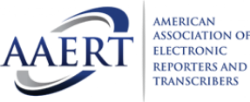The Power of Visuals in Trial Presentations for a Winning Debate
The integration of visuals in test discussions has arised as a critical aspect in effectively interacting intricate arguments to jurors. By using numerous forms of visual help-- be it diagrams, pictures, or animations-- attorneys can boost understanding and retention, ultimately shaping the court's perception of the situation. This strategy not only clears up complex stories but also establishes a psychological vibration that can affect decision-making. As we explore the nuances of this method, it comes to be important to think about exactly how certain sorts of visuals can make a substantial distinction in trial outcomes. What useful methods might lawyers utilize to optimize this possibility?
Importance of Visuals in Trials
In many lawful setups, visuals play a critical duty in boosting the efficiency of trial presentations. The integration of aesthetic components can substantially affect jurors' understanding and retention of complicated information, thereby forming their assumptions and decisions. Visuals, such as charts, layouts, and pictures, can simplify elaborate stories, making them extra easily accessible and compelling.
Moreover, the human mind procedures visual details a lot more efficiently than message, which highlights the significance of incorporating visuals right into legal debates. By equating dense lawful ideas right into aesthetic formats, lawyers can help with more clear communication, ensuring that vital points are not forgotten during tests.
Furthermore, visuals serve to involve jurors on a psychological level, fostering a connection to the instance that words alone may fail to accomplish. The strategic usage of visuals can stimulate empathy, motivating jurors to think about the human facets of the case.
Inevitably, the importance of visuals in tests depends on their capability to boost clarity, enhance juror engagement, and strengthen the story being presented. This powerful mix is important for crafting influential arguments that resonate with jurors and affect the outcome of legal procedures.
Kinds Of Visuals to Use
Efficient test discussions can significantly take advantage of a selection of visual tools that satisfy various aspects of the case. trial presentations. Using layouts and graphes can effectively break down complicated details, making it more digestible for jurors. As an example, flowcharts can show the series of occasions, while bar chart may succinctly compare relevant data points.

Animations and simulations can likewise play a crucial role, specifically in cases including technological data or elaborate circumstances. These visuals can dynamically stand for processes or actions, supplying clarity and engagement that static photos might not achieve.
Furthermore, infographics combine text and visuals to summarize important info efficiently. They can provide timelines, stats, and considerable situation points in a visually attractive way, making it simpler for jurors to comply with the disagreement.
Enhancing Comprehension and Retention

Enhancing understanding and retention throughout trial presentations is essential for ensuring that jurors realize the crucial components of a situation. Visual help function as powerful tools in this regard, converting complex info right into easily her latest blog absorbable styles. By using charts, layouts, and infographics, attorneys can simplify detailed information and highlight bottom lines that may or else be ignored.
Studies have actually shown that individuals maintain info significantly much better when it exists aesthetically. This is especially relevant in a test setting, where jurors might be overwhelmed by the quantity of evidence and testimony. By tactically incorporating visuals, lawyers can direct jurors' interest to the most important aspects of the instance, reinforcing their understanding and memory of the product presented.

Creating Involving Presentations
Exciting jurors' attention throughout trial discussions is important for sharing a compelling story. Engaging discussions leverage aesthetic elements to produce a remarkable experience that resonates with jurors. The critical use of graphics, computer animations, and videos can illuminate complex info, making it extra available and look these up relatable.

Additionally, integrating storytelling strategies can enhance involvement. Providing proof in a rational series that develops sob story permits jurors to link with the product on a personal degree. Varying discussion formats, such as integrating brief video clips or interactive components, can also receive interest and focus throughout the trial.
Eventually, an interesting presentation cultivates a more profound understanding of the instance, enabling jurors to much better value the arguments existing and leading to a much more desirable outcome.
Situation Researches and Success Stories
Numerous study highlight the considerable effect of visuals in test discussions, demonstrating their capability to affect juror assumptions and ultimately the results of situations. A notable case including a personal injury insurance claim highlighted just how the usage of a 3D computer animation of the crash scene made clear complex details. Jurors reported feeling more informed and empathetic, significantly swaying their decision in favor of the plaintiff.
In another circumstances, a company lawsuits instance made use of infographics to existing monetary information and timelines, making complex info obtainable. The graph enabled jurors to comprehend the subtleties of the case much more effectively than verbal explanations alone. trial presentations. As an outcome, the court returned a judgment that surpassed the client's expectations
The engaging visuals not only assisted in creating uncertainty however additionally reverberated emotionally with jurors, leading to a pardon. These success stories emphasize the necessity of published here incorporating visuals into test presentations, as they boost understanding, retention, and ultimately, the influential power of legal debates.
Conclusion
In verdict, the tactical unification of visuals in trial discussions considerably boosts jurors' comprehension and retention of complicated information. By using numerous sorts of visuals, lawyers can effectively clear up vital points and foster psychological links with the audience. Involving discussions, supported by compelling study, demonstrate the extensive impact that visuals can have on influential interaction. Ultimately, the power of visuals offers as a critical aspect in attaining favorable trial results.
Comments on “How Trial Presentations Can Influence the Outcome of a Legal Case”